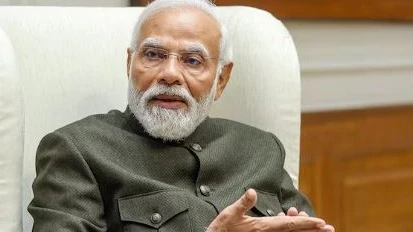PM Modi engaged directly with the youth on numerous occasions, creating a significant impact across the country. Additionally, surgical strikes and air strikes against external threats infused the nation with a sense of patriotism and enthusiasm.
Indian Prime Minister Narendra Modi’s ruling party will secure a clear majority in general elections this summer, a win that will ensure a comfortable third term for Modi, is the prediction ahead of the upcoming Lok Sabha election. With the announcement of the general elections by the Election Commission today, Modi seems to be all set to make a smooth hat trick in this term as well. On one hand where BJP is assured of its victory, Modi being the Prime Minister for the third consecutive time on a path to create history; the fate of 139 year old Congress seems to be hanging by the thread.
The Congress party believed that no other political party could govern the nation for more than five years, which led to a sense of complacency beginning to their downfall. Instead of focusing on strengthening their organizational structure nationwide, they set a target of 150 seats in the opposition and attempted to gauge the public sentiment. However, they failed to grasp the pulse of the population even on significant issues such as demonetization.
During the past decade, the BJP has seen a strengthening of its position under the leadership of Modi, while in contrast, the Congress has witnessed a continued decline under Rahul Gandhi’s leadership. The upcoming election holds significant importance for Rahul Gandhi and the Congress party, as it could potentially determine his political future. There’s a growing suspicion on the effectiveness of the opposition leader, and if he fails to secure a majority, there might be calls within the Congress party to pass the baton to his sister, Priyanka Gandhi.
However, internal dynamics within the party seem to be unsettled. Congress is relying heavily on numerical strength in its political strategy, which appears to be strained. This approach isn’t yielding the desired results, and the party’s assumption that the electorate will automatically provide them with sufficient support to form governments, especially in non-Hindi speaking states as seen in 2004, may be flawed.
Prime Minister Modi recognized corruption as a paramount concern for the nation and used demonetization as a means to convey his commitment to combating it. This move resonated with the public, contributing to the BJP’s growing strength, particularly in rural areas. Initiatives like the Ujjwala Yojana, provision of permanent housing, electrification, access to clean water, and a nationwide campaign for village sanitation further bolstered BJP’s support, especially among the rural populace, youth, and women.
Modi engaged directly with the youth on numerous occasions, creating a significant impact across the country. Additionally, surgical strikes and air strikes against external threats infused the nation with a sense of patriotism and enthusiasm. However, the Congress party underestimated the strength of Modi’s image, exemplified by Rahul Gandhi’s campaign slogan “Chowkidar Chor”.
Despite this effort, the party saw only marginal improvement in its position, as compared to 2014. During the 2019 general elections, seat numbers increasing slightly from 44 to 52, and the party fell short of securing enough seats to qualify for the Leader of the Opposition position.
Prime Minister Modi set the agenda for Party 3 from the outset of Part 2. He surprised both the nation and the world by revoking Article 370 in Kashmir. Subsequent decisions, such as the resolution of the Ram Temple dispute in Ayodhya, implementation of 33 percent reservation for women
Congress remained fixated on issues like the consecration ceremony of the Ram Lala statue in Ayodhya and the abrogation of Article 370, with no coherent response to date. BJP seized upon these issues to portray Congress as opposing these decisions, framing them as central issues in the electoral campaign.
Prime Minister Modi highlighted these initiatives in his public addresses, appealing to voters to support development. In contrast, Congress centered its campaign around Rahul Gandhi, focusing on issues such as unemployment, inflation, and corruption. The outcome of the prolonged electoral battle, spanning almost two months, will ultimately determine the accuracy of each party’s stance.

